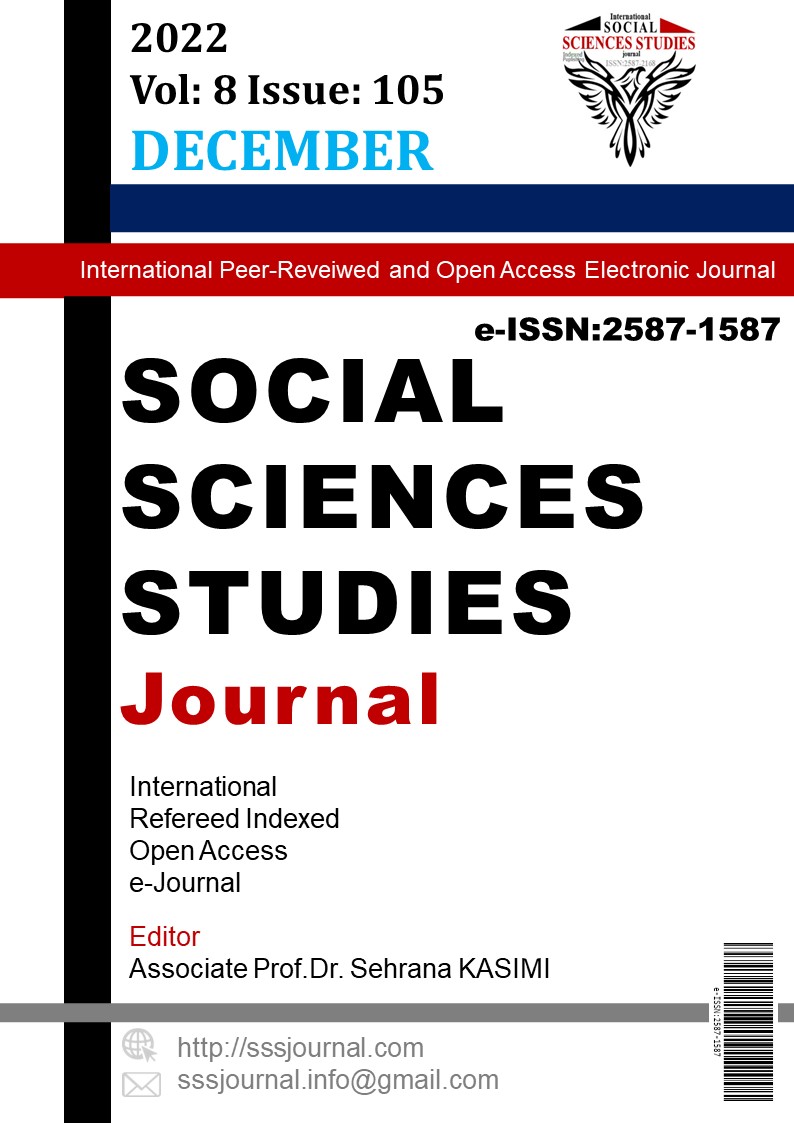Author :
Abstract
Sanat, günümüz toplumsallığının kriz durumlarında, norm dışı düşünme ve davranma, verili gerçeklikte kısa devreler yaratma, statükoyu sarsarak hakikati yeniden ele geçirme imkanları sağlayan bir eyleme halidir; bir sıçramadır. Sanata erişimin ve sanatın sürdürülebilirliğinin gündelik eylemlerimizle gerçekleşebilmesinin imkanlarını araştırmak, diyalog temelli, ilişkisel ve beden odaklı, deneyim üreten pratiklerle mümkündür. Canlı sanatın deneyimlenmesi, arşivlenmesi ve geleceğe aktarılması ekseninde performans ve onun dokümantasyonu ikili bir karşıtlık içinde değil karşılıklı bir oluş içindedirler ve ancak bu yaklaşımla ele alındıklarında potansiyelleri açığa çıkmaya başlar. Bu makalede, post-performans kavramı ve belgeleme eyleminin performatifliği konusu, canlılık kavramının sinirbilim ve tıptaki gelişmelerle dönüşmesi bağlamında canlı sanatın yeniden düşünülmesi için araçsallaştırılarak, üç sanatçının tekrar pratikleri üzerinden ele alınacaktır. Radikal yaklaşımlarıyla sanatın sürece dayalı bir pratik olarak kavranmasına önemli katkıları olan Tino Sehgal, Lygia Clark ve Douglas Davis’in çalışmaları ekseninde birey ve toplum, organizma ve çevresi, birbirini dönüştüren, birbirine dolaşık eylemler ve oluşlarla birlikte karmaşık bir süreç olarak ele alınırken, maddesel–maddesiz, gerçek–kurgu, doğa–kültür, teori–pratik, beden–söylem, dijital–analog, sanat–sanat olmayan gibi ikiliklerin ötesine geçebilmenin potansiyelleri, Elizabeth Grosz’un yorumuyla Nietzsche ve Bilginin Koreografisi’ne başvurularak tartışılacaktır.
Keywords
Abstract
During the crises of contemporary society, art as an action becomes an opportunity and a leap for thinking and acting outside the norms, creates short-circuits within given realities, and reclaims truth by disrupting the status-quo. Researching the potentials of the sustainability and accessibility of art through daily activities can be made possible through practices that generate dialogical, relational, and body-centric experiences. Regarding the experience of live art, as well as its archiving and handing down to the future, performance and its documentation do not stand in a binary opposition, but in a process of mutual becoming. In this article, the concept of post-performance and the performativity of the documentation process will be utilized to rethink live art in light of a renewed perspective of life itself, through recent developments in neuroscience and medicine, and investigated through three artists' practices of repetition. Taking Tino Sehgal's, Lygia Clark's and Douglas Davis’ radical approach to art as examples that contributed to art's gaining acceptance as a process-based practice and drawing on Elizabeth Grosz’s explorations in Nietzsche and the Choreography of Knowledge, binaries such as individual vs. society, organism vs. environment will be investigated as complex processes and becomings with entangled actions and mutual transformations, including their potentials to surpass binary oppositions such as material vs. immaterial, real vs. fiction, nature vs. culture, theory vs. practice, body vs. discourse, digital vs. analog, art vs. non-art.
Keywords
- 1. ARTFORUM. Erişim: 12.11.2022. https://www.artforum.com/print/201310/the-year-in-re-44068
- 2. Arte France. (2017). Artist forbids any reproduction of his artworks | LIVE ART # 6 - Tino Sehgal, Palais de Tokyo. Camera Lucida productions. Erişim: 26.10.2022. https://www.youtube.com/watch?v=0TC0iSWCCjM
- 3. Auslander, P. (2006). The Performativity of Performance Documentation. PAJ: A Journal of Performance and Art, 28, 1-10.
- 4. Barad, K. (2007). Meeting the Universe Halfway: Quantum Physics and the Entanglement of Matter and Meaning. Duke University Press, Durham.
- 5. Barad, K. (2003). Posthumanist Performativity: Toward an Understanding of How Matter Comes to Matter. Signs: Journal of Women in Culture and Society, 28, 801 - 831.
- 6. Barad, K. (2020). “Madde Hisseder, Konuşur, Acı Çeker, Arzular, Özler ve Anımsar” (Çev: Nalan Kurunç, Öznur Karakaş, Ahmet Nüvit Bingöl), Terrabayt. Erişim: 11.11.2022. https://terrabayt.com/dusunce/maddehisseder-konusur-aci-ceker-arzular-ozler-ve-animsar-karen-barad-ile-roportaj-1/
- 7. BBC News. Canada. Erişim: 26.10.2022. https://www.bbc.com/news/world-us-canada-60495730
- 8. Brugerolle, M. D. (2018). Post Performance Future. Mousse Magazine, (63).
- 9. Clark, L. (2018). “The Structuring Of The Self” (Ed. Marcus Boon and Gabriel Levine), Practice, ss. 53-55. The MIT Press, Cambridge MA.
- 10. Çatalbaş, Ş. (2013). “Acting in the Library: İnci Eviner” (Ed: Hank Slager), Offside Effect: Academy as Exhibition, 1st Tbilisi Triennial. ss. 36-37, Metropolis M Books, Utrecht.
- 11. Deleuze, G. (2006). Bergsonculuk (Çev. H. Yücefer), Otonom Yayıncılık, İstanbul.
- 12. Davis, D. (2000). Erişim: 26.10.2022. https://whitney.org/artport/douglas-davis
- 13. Groys, B. (2017). Akışta: İnternet Çağında Sanat (Çev. E. Kılıç), Koç Üniversitesi Yayınları, İstanbul.
- 14. Grosz, E. (2020). Uçucu Bedenler: Bedensel Bir Feminizme Doğru (Çev. K. Güler), Notabene Yayınları, İstanbul.
- 15. Lane, R. L., Wdowin-McGregor, J. (2017). Reperformance Strategies for the Reiteration of Tino Sehgal’s Constructed Situations. Verband der Restauratoren (VDR), Bonn.
- 16. Larsen, L. B., Rolnik, S. (2009). On Lygia Clark's Structuring the Self. Afterall Publications, Afterall Journal 15.
- 17. Nietzsche, F. (2001). Ahlakın Soykütüğü Üstüne (Çev. Prof. Dr. Ahmet İnam), Yorum Yayınları, İstanbul.
- 18. Rolnik, S. (2022). Lygia Clark, from Object to Event. Rawen Row. Erişim: 12.11.2022. http://www.ravenrow.org/texts/17/
- 19. Rolnik, S. (2008). "Politics of Flexible Subjectivity: The Event Work of Lygia Clark", Antinomies of Art and Culture: Modernity, Postmodernity, Contemporaneity (Ed. Okwui Enwezor, Nancy Condee, Terry Smith), Duke University Press.
- 20. Vicente, R., Rizzuto, M., Sarica, C., Yamamoto, K., Sadr, M., Khajuria, T., Fatehi, M., Moien-Afshari, F., Haw, C. S., Llinas, R. R., Lozano, A. M., Neimat, J. S., & Zemmar, A. (2022). Enhanced Interplay of Neuronal Coherence and Coupling in the Dying Human Brain. Frontiers in aging neuroscience, 14, 813531. https://doi.org/10.3389/fnagi.2022.813531
- 21. TATE. Erişim: 26.10.2022. https://www.tate.org.uk/art/art-terms/l/live-art
- 22. Stedelijk Museum Amsterdam. Erişim: 12.10.2022. https://www.stedelijk.nl/en/news/tino-seghal-variation
- 23. Whitney Museum of American Art. Erişim: 12.10.2022. https://whitney.org/artport/douglas-davis
- Görsel 1: Lygia Clark, Estruturação do Self (Kendiliğin İnşası), 1976–88. Clark'ın MoMA'da gerçekleşen
- retrospektif sergisinden görüntü (2014). Erişim: 14.10.2022. https://hyperallergic.com/142956/the-radical-
- Görsel 2: Douglas Davis, The World’s First Collaborative Sentence (Dünyanın İlk İmece Cümlesi), 1994. Erişim:
- 13.10.2022. https://artport.whitney.org/collection/DouglasDavis/live/Sentence/sentence1.html





